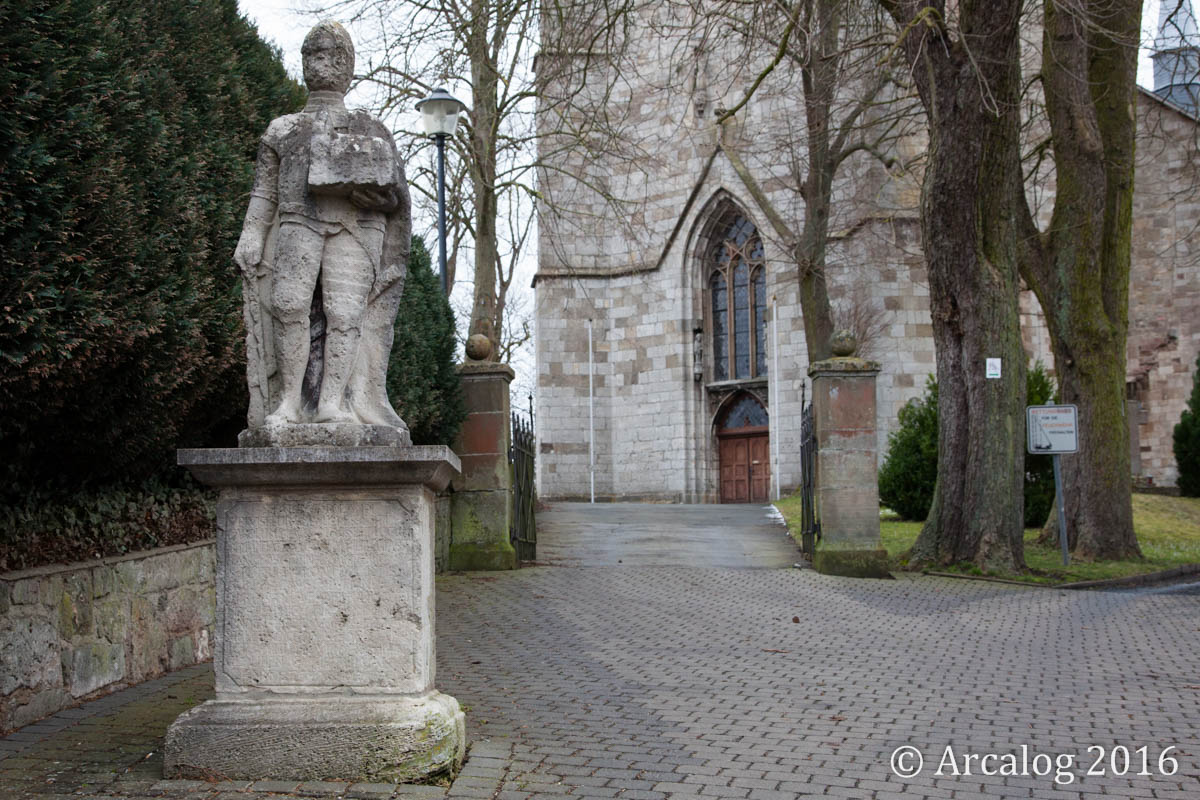According to the Frankish Chronicles, the Irminsul was a Saxon idol destroyed by Charlegmagne:
The most gracious Lord King Charles then held an assembly at Worms. From Worms he marched first into Saxony. Capturing the castle of Eresburg, he proceeded as far as the Irminsul, destroyed this idol and carried away the gold and silver which he found. A great drought occurred so that there was no water in the place where the Irminsul stood. The glorious king wished to remain there two or three days in order to destroy the temple completely, but they had no water. Suddenly at noon, through the grace of God, while the army rested and nobody knew what was happening, so much water poured forth in a stream that the whole army had enough. Then the great king came to the River Weser. Here he held parley with the Saxons, obtained twelve hostages, and returned to Francia. He celebrated Christmas at Herstal and Easter, too. And the date changed to… 773. (from here)
From this chronicle we learn that the Irminsul was:
- Somewhere beyond Eresburg from the direction of Worms
- An idol
- Probably attached to a temple that served as a treasury
- The temple was large enough that it required at least a few days to destroy
- Some distance from a perennial source of water
The 12th century Kaiserchronik (an important sources for early German history) provides further clues as to what exactly the Irminsul was.
Upon an yrmensul
Stood an idol huge,
Him they called their merchant. (ie. Hermes, the Greek god of merchants?)Romans him untruly slew,
On an yrm they buried him.On an yrmensul he [Simon Magus] climbed,
The land-folk to him all bowed. (Massmann as cited by Jakob Grimm, Teutonic Mythology, pg 116)
Based on these texts, an irm seems to be a pedestal or mound upon which an image could be placed.
Rudolph of Fuld defined the Irminsul as “a universal pillar that bears all.” ( Jakob Grimm, Teutonic Mythology, pg 117) According to Grimm, the German tribes believed that Irm was the high god of the whole human race and not just a local deity. Grimm further suggests that there may be some connection between Irm and Hermes for whom the Greeks also raised pillars. 1
There is a church in Eresburg, on the hill overlooking Obermarsburg, that is purported to be built on the place where the Irminsul once stood. It is certainly one of the most impressive hills in the area.

The original church in Eresburg was built by Charlegmagne in 800 AD.

A statue standing in the entrance to the church has an interesting inscription.
O Mars! You were supposed to be God. But here I stand before you with scoffing and mockery. Ages ago the heathen would call upon you. Now In true faith We call upon Christ. (1757 AD)
Ironically, the middle of the 18th century saw a resurgence of pagan ideas in Germany. New classics departments were established in German universities that celebrated a somewhat sanitized version of Greek mythology and a the Bible was demoted from scripture to literature.

There is another possible site for the Irminsul that I think is even more interesting. But I will have to save it for another post.
- Now whatever may be the probable meaning of the word irman, iormun, eormen, to which I shall return in due time, one thing is evident, that the Irman-pillar had some connection, which continued to be felt down to a late period (p.H6),with Mercury or Hermes, to whom Greek antiquity raised similar posts and pillars, which were themselves called Hermae, a name which suggests our Teutonic one. (Teutonic Mythology, pg 118) ↩
In the atlas Theatrum Orbis Terrarum from Abraham Ortelius on page 127 of 396, thirth paragraph, is the following to be read: Herculis columnas apud eofdem superesse testatur. Gentis magnaminitatem defe viritus fiduciam. With the help of Goodle Translate it means something like: the same column , shows the which is surviving under them, shows the magnanimous of the heathens ( = Frisians) and the believe in their courage/virtue.
In my opinion this means the Frisians had a column/sul with agreement with the by the Romans known columns of Hercules.
On page 131 of 396, on the small and probably much older chart than the main chart, called Antique Frisea situs sub Augusto these columns can be found. So I think there must have been more Irmunsuls, this one probably somewheree between Vries and Rolde ( Drenthe) where in prehistoric time a route existed over the high and ‘dry’ Hondsrug between the south ( now near Coevorden) and the north (direction Groningen).
You may found the Ortelius atlas on the website of the Utrecht Universiteits bibliotheek under Bijzondere Collecties / Theatrum Orbis Terrarum
Hi, thanks for dropping a line. It is interesting that the irmunsul’s should be called “columns of Hercules.” It makes sense given their connection to sun worship. I’d like to do more research on these some day. If you find anything more or write on the subject, please let me know!